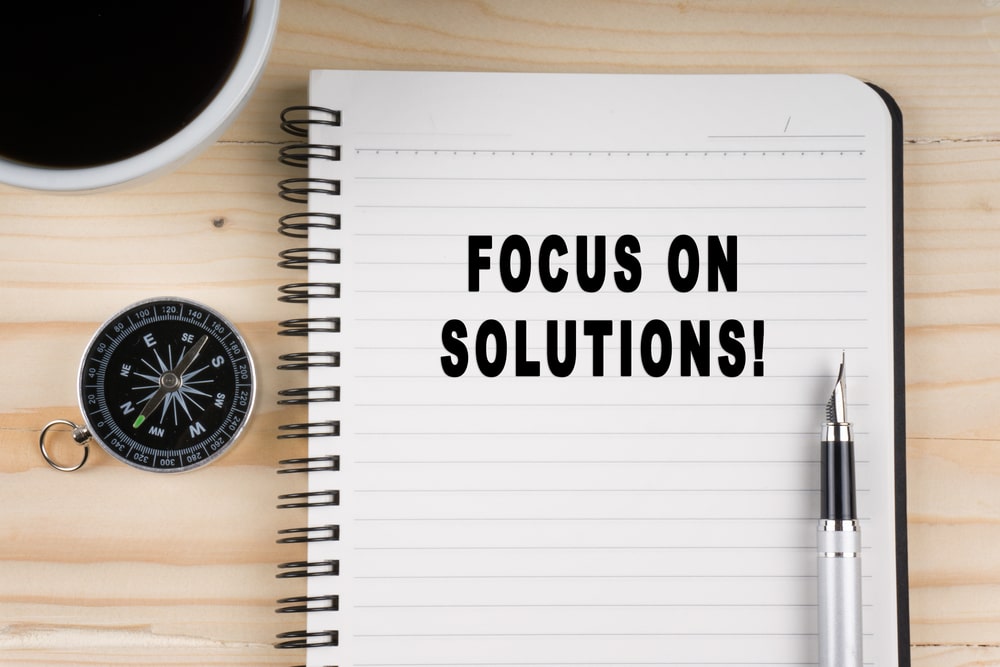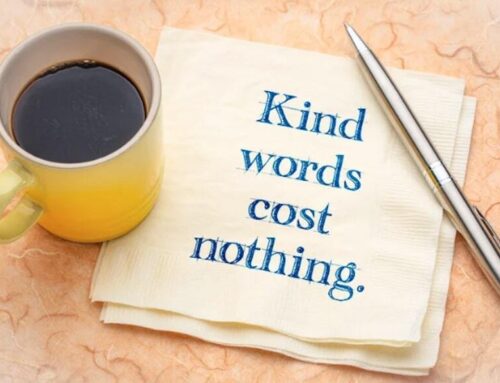
The two most important skills any individual should possess include resolving conflict and building trust with others. Even if we are not born with these conflict resolution skills, they can be learned. AllWin Conflict Resolution Training possesses the expertise you need in dynamic training solutions.
AllWin’s conflict resolution training program utilizes hands-on conflict resolution activities to reinforce critical skills. Team members can practice these conflict resolution activities in groups to sharpen the skills needed to build trust and resolve conflicts. This depends on the size of the company, the industry, and the dynamics of the company staff.
Simulated Scenarios for Real-World Skills
Simulations are interactive exercises used in conflict management training to mimic the real world. Simulations in training activities are most suitable because they are versatile and can fit into different contexts and learning styles. The main benefit accrued from simulations as a training method is that they provide a safe and engaging environment for reflection, learning, and feedback.
Several conflict resolution activities use simulated conflict scenarios for practical learning, including:
1. The Orange Negotiation
As the name suggests, the ‘Orange Negotiation’ is part of conflict resolution activities suitable for a group. The group should be divided into two teams, and the facilitator of the activity takes the role of the keeper of a rare orange.
The team members should understand that the orange is rare and the last of its kind. The team members are supposed to buy the fruit, but they need to convince the facilitator that they are the right team that deserves the fruit.
At the beginning of the activity, Team A will be informed that the rare orange rind can be used to invent a new element, and Team B will be told that the pulp of the orange cures a disease. The first speaker of the first team will speak, arguing in favor of their team. The first speaker of the other team will do the same, and the game continues.
Goal
The idea of the game is to get team members to talk to each other and determine how they can all benefit from the orange. Essentially, each team needs a different part of the fruit, and by negotiating, they will break the stalemate and resolve conflicts.
2. Divide the Loot
As the name suggests, ‘Divide the Loot’ is one of the conflict resolution activities designed to measure a person’s trust, generosity, and collaboration abilities. The activity also suits groups or teams but should not necessarily be divided into two. Every player is given a specific amount of money, usually fake and not real, with the idea of creating a conflict scenario.
Every player is then asked to put some money back into the group pot without revealing to anyone how much they are willing to contribute. After every player has contributed, the facilitator takes the pot, calculates the total, and then asks every player to negotiate how the ‘loot’ should be divided among each individual.
Goal
The conflict resolution activity aims to determine how an individual would contribute to a common goal and how the most successful teams should divide the results from that collaborative participation without feeling that they deserve more than any other member.
3. Am I The A**hole (AITA)
Am I The A**hole, or the AITA, as it is popularly known, is another activity that describes conflicts and asks members who they think is at fault. The team has three possible judgments to make, and whether an individual is ‘Not The A**hole,’ ‘Yes, The A**hole,’ and ‘Everyone Sucks Here.’
The activity requires a leader who develops and presents a conflict scenario that could happen in the workplace. Every team member should voice their opinions on why Person A, B, or both are at fault.
Goal
Everyone gains insight into how they might contribute to workplace conflicts or disagreements, highlighting the importance of self-awareness in team dynamics. This exercise encourages participants to take responsibility and be proactive in seeking peace, fostering a more harmonious and cooperative environment within the team.
4. The Eye Contact Test
This activity is suitable for groups. A facilitator gives index cards to group participants, who are then asked to spread out. The facilitator then asks the participants to wander around a room for a minute, pretending to be in a public space.
The first part of the activity asks the participants not to make eye contact with anyone. The first part of the activity ends with participants writing down how they feel. In the second part of the activity, the members should make eye contact and record their feelings afterward.
Goal
The participants should note the differences in their feelings when they make eye contact and when they do not make eye contact during workplace conflict.

Role-Playing Exercises: Building Empathy and Communication
One of the most fundamental skills in resolving conflict is empathy and communication. Communication skills allow individuals to build and maintain positive relationships. Below are different role-play scenarios, how they can enhance empathy and communication skills, and practical examples of resolving conflicts.
5. Defining ‘Bad’ Listening and ‘Good’ Listening Exercise
In this activity, at least two people are required to participate in defining ‘bad’ listening and ‘good’ listening, incorporating elements of conflict confessions and hypothetical scenarios to encourage communication. The activity is also suitable for larger groups, who can opt to work in pairs. As a pair, you are expected to describe what you believe ‘bad’ listening and ‘good’ listening entail.
Your list should include clear aspects differentiating between ‘bad’ and ‘good’ listening. ‘Bad’ listening is characterized by actions such as fidgeting, looking at your phone, interrupting, and rolling your eyes, among others. Conversely, ‘good’ listening involves behaviors such as nodding, making eye contact, making comments like ‘okay’ and ‘I see,’ and smiling, among others.
Goal
This engaging team-building exercise helps participants recognize the impact of active listening on conflict resolution. By distinguishing between constructive and dismissive listening behaviors, participants learn how attentive listening can reduce tension and improve effective communication, while poor listening habits can escalate conflicts.
6. The “Yes, but / Yes, and” Activity
The ‘Yes, but’ / ‘Yes, and’ activity builds on ideas like problem-solving and collaborating. It is an activity suitable for large groups, with each team member staying in a pair. The first person in a pair presents an idea, and the second person responds with ‘Yes, but’ and adds comments that challenge the idea.
The first person also responds to the comments with ‘Yes, but’ and more additional comments on why their idea is still better, with the second person following suit with their comments to support why they challenge the idea.
The second part of this conflict resolution game involves a similar pair of persons going back and forth with an idea. The first speaker presents an idea, and the second responds with ‘Yes, and’ and provides additional information on why the idea is great.
Instead of challenging the idea, the pair focuses on providing additional information. Eventually, they will realize that responding to an idea with ‘Yes, and’ is better at avoiding conflicts than responding with ‘Yes, but.’ This approach fosters a positive dialogue that can help participants avoid future conflicts by promoting a collaborative mindset.
Goal
Workplace conflicts arise in groups and teams when people challenge other people’s ideas, and agreeing and providing more information about an idea can help resolve conflicts and build trust, which is suitable for workplace conflict resolution.
7. Rotate Debates
This workplace conflict resolution training activity is suitable for teams, which should be divided into two. A facilitator then presents a topic to team members, asking them if pineapples should be used when making pizza. The first speaker of each team takes a side in the debate, arguing their position in two minutes. The team members will then switch sides and argue the opposite view.
Goal
The activity offers lessons on how people will always have different perspectives and why they should consider every perspective in future conflicts.
8. Make-Believe Mediations
The final activity in this list is the make-believe mediation, which most participants will find the most interesting. In real life, conflicts are very tense, and mediation of fictional conflicts can help individuals develop the skills they need when they are in a tense situation.
The participants should participate in the activity in a low-risk setting, where they watch a clip from a movie or pick a scene from a book. The group can also pick a famous conflict and try to solve the spat. The participants in this activity can even re-enact and act out the scenes. When everyone is well-versed in the details of workplace conflict, they should take a side and try to resolve the conflict using multiple angles.
Goal
This game aims to get people to participate in conflict resolution using a fictional conflict. The result is to enhance conflict resolution skills, including compromise, avoidance, negotiation, and collaboration.

Team-Building Games with Conflict Resolution
Conflict is inevitable in the workplace. Many organizations adopt collaborating conflict management, which is also called the ‘win-win’ strategy. These conflict resolution activities involving teams serve the dual purpose of promoting teamwork while addressing conflict resolution. The primary advantage of team building as a way of managing conflict in the workplace is that it makes all parties involved in a disagreement feel valued.
Most team-building activities expect participants to listen critically to the concerns of people in conflict, as shown in these examples.
9. Arm Wrestling
As one of the team-building activities, arm wrestling pairs two individuals, asking each to take a position. One point is awarded each time an individual gets their competitor’s hand to touch the table. The pairs get ten seconds for each round.
Goal
This team-building game teaches individuals that everyone can win in the office and that effective conflict management is essential to avoid collective failure in workplace conflicts. The only way for each pair to earn as many points as possible is to alternate wins, with one first earning a point and then allowing the other to win the next round.
10. Knot or No Knot
This team-building activity involves the use of a rope. A group facilitator coils a rope, preferably with patterns or stripes, on the floor. The team should pick the ends of the rope and pull. The question is whether or not a knot will result at the end of their pulling.
Goal
The primary aim of the ‘knot or no knot’ team-building activity, a key exercise in conflict resolution games, is for a team to communicate effectively, collaborate with different personalities, and reach compromises to determine if the rope will end up in knots.
11. Count Up
These conflict resolution exercises are suitable for team members at the workplace. The group can sit or stand in a circle and count to twenty. Every member can only say a number one at a time. If any members say the same number simultaneously, the counting starts over.
Everyone should keep their eyes open during the activity if they want the game to go faster. As one of the conflict management games, it becomes more challenging when participants are asked to close their eyes, requiring even greater focus and teamwork.
Goal
The participants should unanimously agree that cooperation is crucial for successful team building, especially when maintaining open eyes to read each other’s body language. This exercise highlights the role of non-verbal cues in team dynamics, emphasizing how effective communication and mutual understanding can strengthen team cohesion and collaboration.
12. Webcam Off/On
In today’s world, most meetings are taking place via Zoom videos. Like most other team-building activities and conflict-resolution exercises, participants must work in pairs. The first part of the activity requires the two individuals to communicate via a video call with the webcam on.
The second part of the team-building activity activity also requires the participating pair to communicate but with the webcam off so that it is audio only. Each video call should last about five minutes, with the first three minutes dedicated to the person speaking and the last two minutes asking the listener to interject.
Goal
The ‘webcam on/off’ activity, a part of team-building activities, aims to measure the differences in communication and active listening when the other person can see the speaker versus when they cannot. This activity is insightful in teaching about listening and eye contact and how these skills impact one’s better understanding of spoken words.

Reflective Discussions and Case Studies
Case studies and reflective discussions are open-ended and are used to emulate real-life conflict situations. Participants in these activities will develop critical thinking skills and confidence, particularly in these cases:
13. Be in the Fog
This activity works well for groups. Participants sit in a quiet room and imagine themselves as a “fog” that absorbs criticism, including harsh or unfair comments, without reacting. Participants can sit in pairs with someone they trust, and each person in the pair will provide criticism while the other practices absorbing it without anger or defensiveness.
The purpose of this exercise is to help participants regulate their emotions in conflict situations, recognizing that criticism is a normal part of workplace interactions. Criticism from a supervisor, manager, or customer often requires a calm response rather than an emotional one.
Goal
This activity teaches participants to maintain composure in the face of criticism, an essential skill for resolving conflicts effectively. By practicing emotional control, employees learn how to handle difficult feedback with patience and professionalism, fostering a healthier workplace dynamic.
14. Storytelling Activity
This conflict resolution activity is suitable for groups. The team sits down around a facilitator who reads a story. The facilitator then asks the team questions about the story. The listeners must not be aware that they must answer any questions at the end of the storytelling activity. The most important questions should be about the characters’ names in the story, where the story is set, and what happens at the end of the story.
Goal
This conflict resolution activity aims to test a person’s listening skills. It is one of the most crucial conflict resolution skills, especially for customer service personnel who must listen to a customer’s complaints and respond appropriately.
Final Thoughts
When you hear the words ‘conflict resolution,’ your mind will go straight to mediation. However, workplace conflicts can be solved by teaching team members how to handle conflicts without causing damage. Conflict resolution activities teach employees good habits like compromise, collaboration, active listening, and negotiation.
Most of these exercises should occur in low-risk environments, with trained facilitators running the show. Contact AllWin today—we will be glad to work with you to create the ideal conflict resolution workshop for your team.

About the Author: Jeremy Pollack
Jeremy Pollack, Ph.D. is the founder of Defuse De-Escalation Training, a sister company of Pollack Peacebuilding Systems, the largest workplace conflict resolution training and consulting firm in North America. He actively participates in de-escalation training and consulting initiatives for a variety of industries, from Fortune 500 companies to well-known non-profits. Besides his Ph.D. in Psychology from Grand Canyon University, Jeremy holds a Master’s Degree in Negotiation, Conflict Resolution, and Peacebuilding (NCRP) from California State University, Dominguez Hills. He is also a member of several organizations focused on conflict resolution and peacebuilding, such as the Peaceful Leadership Institute, the Association for Conflict Resolution, and the Division 48 (Division of Peace Psychology) of the American Psychological Association. Jeremy also holds several certifications in the field of training and coaching: he is a Certified Organizational Development Coach (CODC™), a Certified Clinical Trauma Specialist-Individual (CCTS-I™), and an Associate Certified Coach (ACC) under the International Coaching Federation.









